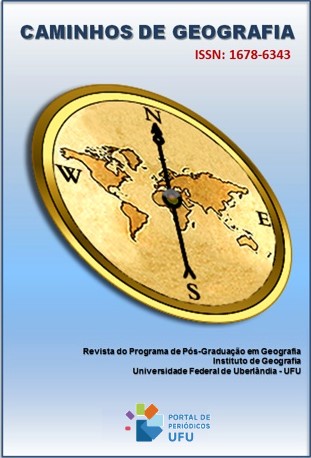CONSUMPTION, CREDIT AND DAILY LIFE: INSTANT PAYMENTS (PIX) AND BY APPROACH AND NEW INCOME MANAGEMENT PRACTICES IN BRAZIL
DOI:
https://doi.org/10.14393/RCG249365642Keywords:
Credit, Consumption, Payment by approach, PIX, DailyAbstract
This article aims to discuss the relationship between consumption, credit and daily life in Brazil, demonstrating that, from the expansion of credit and expansion of consumption by a significant portion of the population, especially those with lower purchasing power, we found that there was, to a certain extent: a) changes in consumption practices such as, for example, the purchase of goods whose cash value would not fit in the family budget, but through credit in installments it becomes possible; b) emergence of new income management practices, through the use of several cards, the loan of third-party cards, installment purchases and use of revolving credit; c) increased use of new forms of payment mediated by technology, such as the contactless card and the PIX. This analysis is intended to foster the debate regarding the expansion of this widely used shopping modality, demonstrating how plastic money has guided the daily lives of Brazilian families, mainly changing their consumption dynamics. However, the increase in consumption on credit combined with poor income management means a commitment of a good part of the monthly income, which, in many cases, leads to indebtedness and default.
Downloads
Downloads
Published
How to Cite
Issue
Section
License
Copyright (c) 2023 Flaviane Ramos dos Santos, Felipe César Augusto Silgueiro dos Santos

This work is licensed under a Creative Commons Attribution-NonCommercial-NoDerivatives 4.0 International License.
Autores que publicam nesta revista concordam com os seguintes termos: a) Autores mantém os direitos autorais e concedem à revista o direito de primeira publicação, com o trabalho licenciado sob a Creative Commons Atribuição-NãoComercial-SemDerivações 4.0 Internacional. b) Autores têm permissão e são estimulados a publicar e distribuir seu trabalho online (ex.: em repositórios institucionais ou na sua página pessoal), já que isso pode gerar alterações produtivas, bem como aumentar o impacto e a citação do trabalho publicado. c) Em virtude de aparecerem nesta revista de acesso público, os artigos são de uso gratuito, com atribuições próprias, em aplicações educacionais e não-comerciais.











